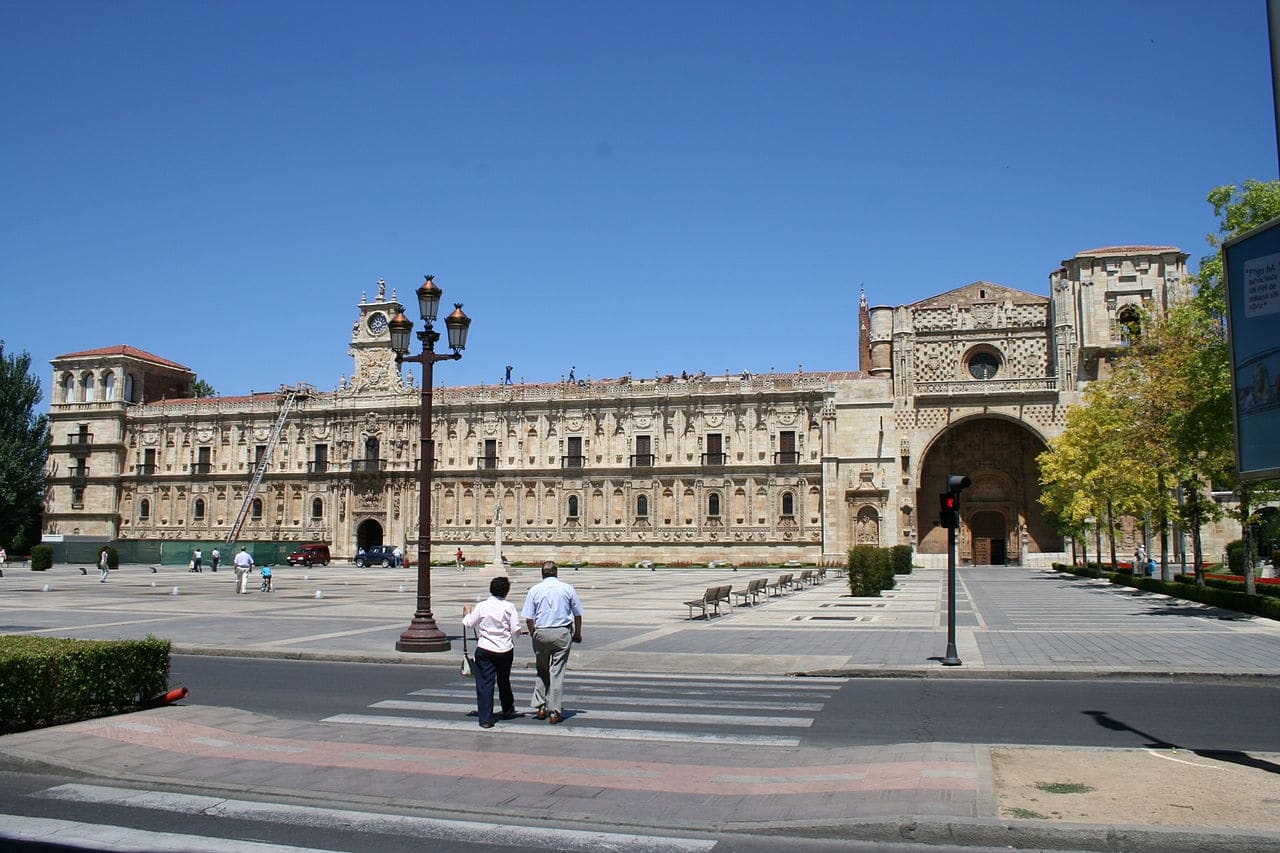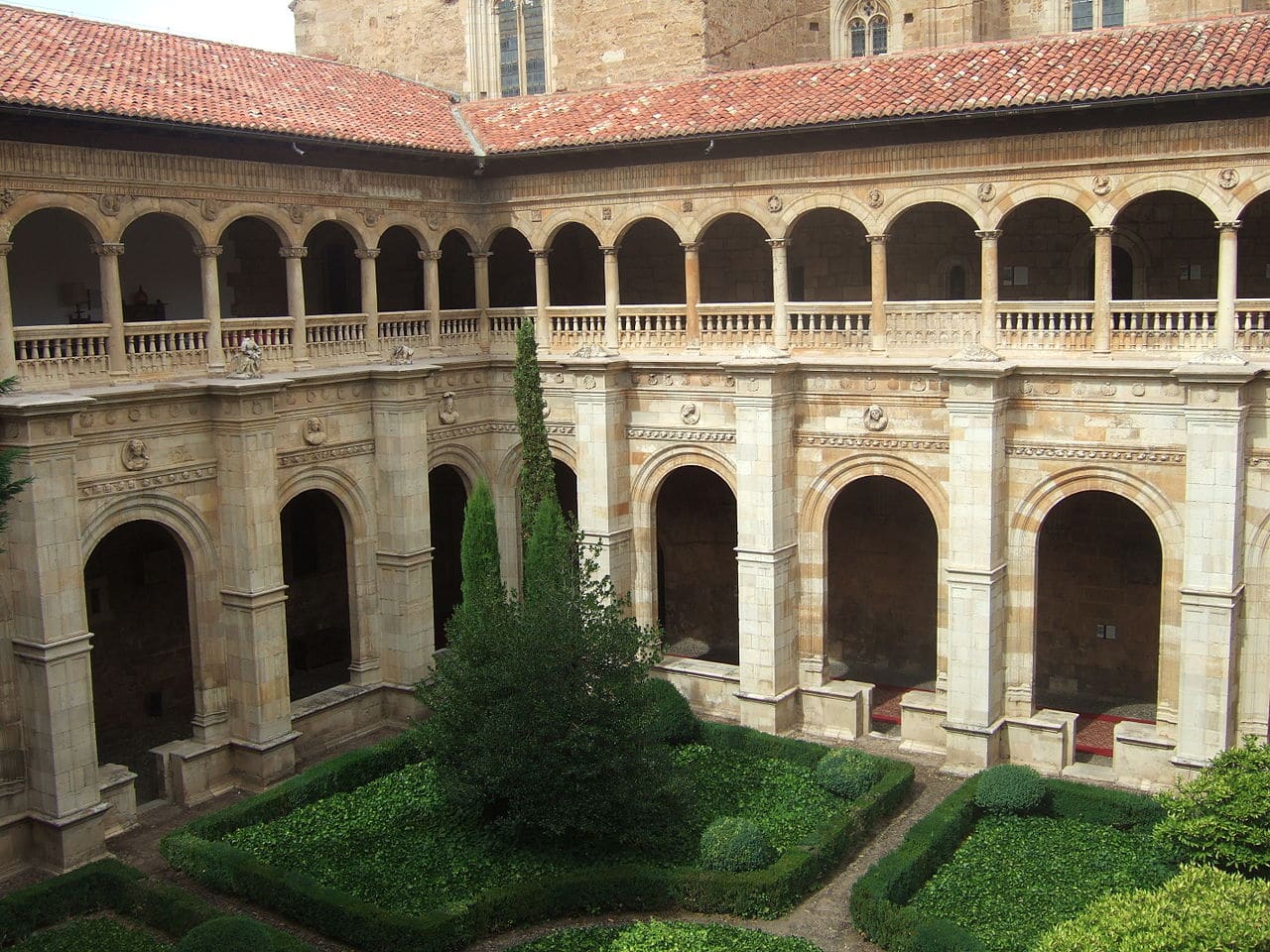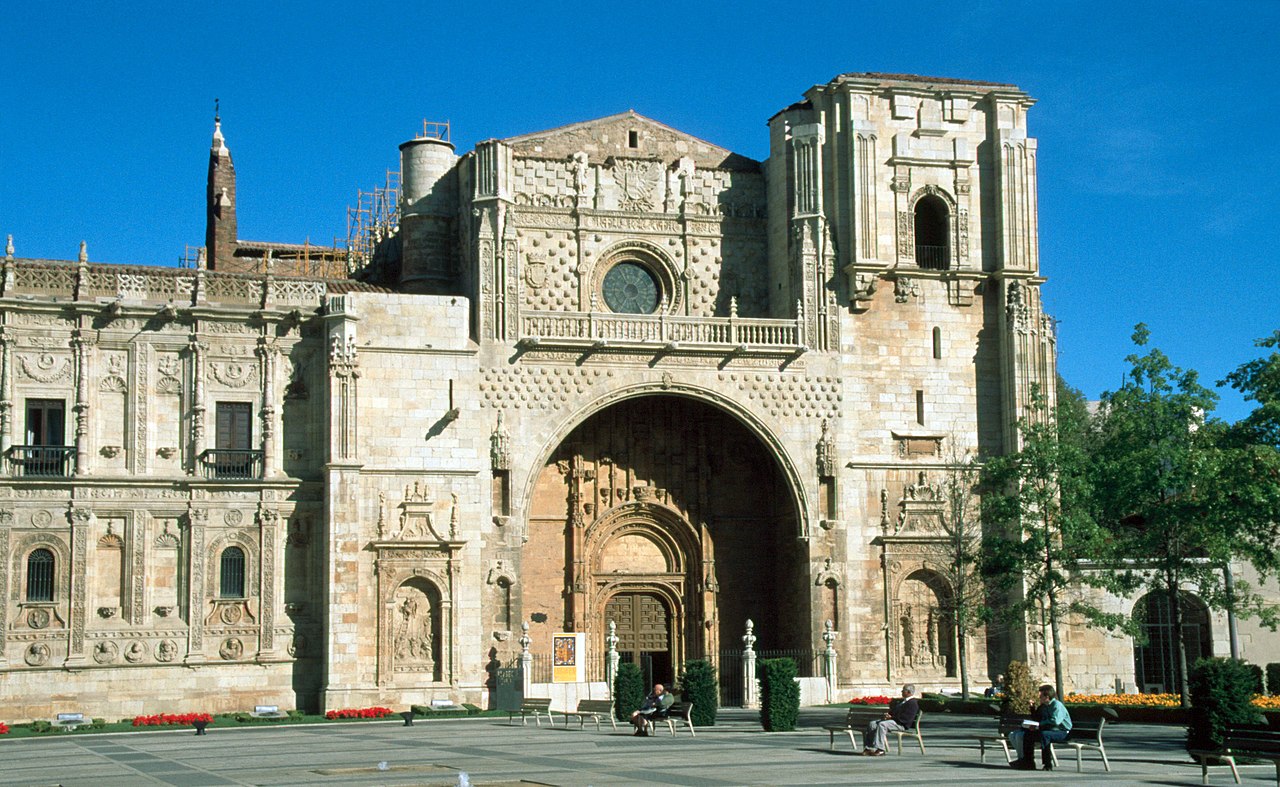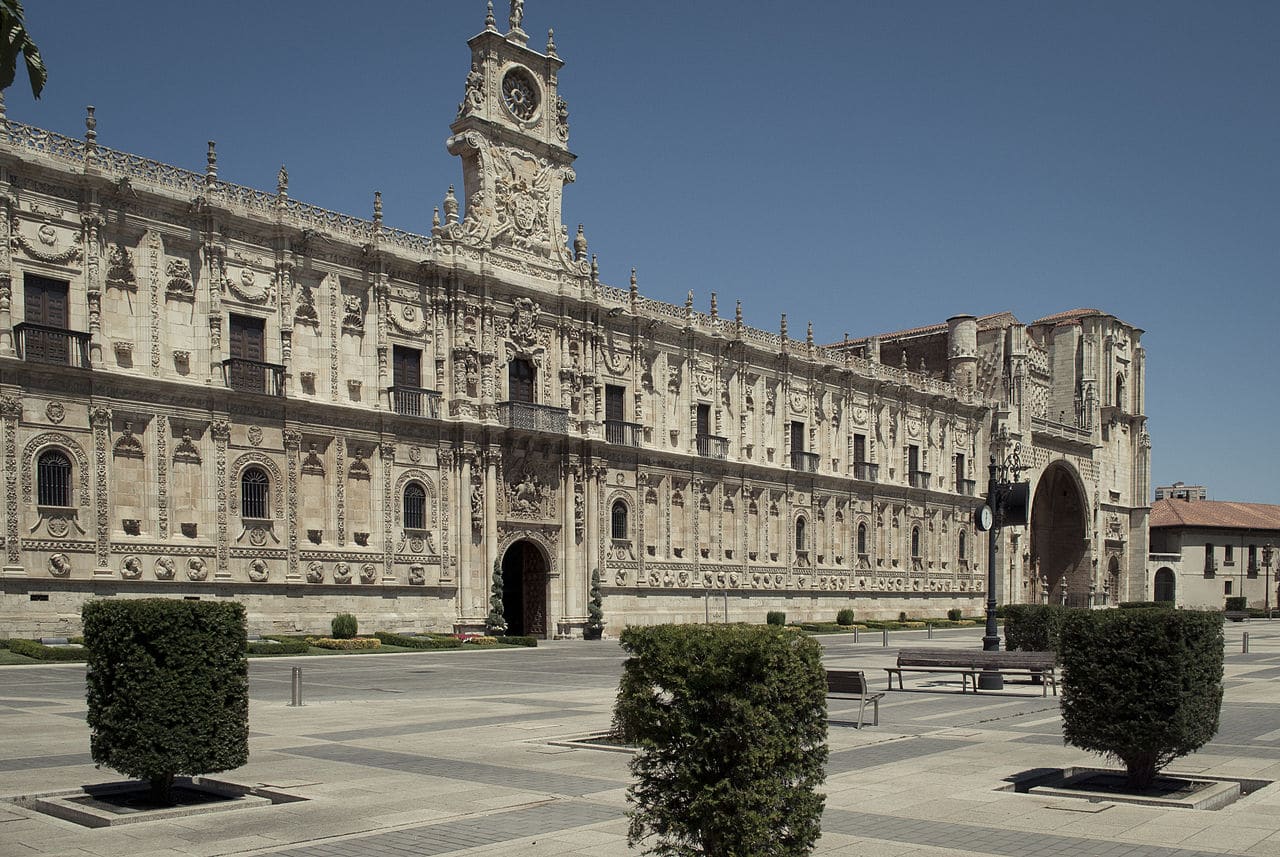
The Parador de León is located in one of the most emblematic buildings of the Castilian city: the convent of San Marcos. Located on the shores of Bernesga river, its origins date back to the XNUMXth century, when a hostel was built to accommodate pilgrims who were going to Santiago de Compostela.
However, the building that we know today was built in the XNUMXth century on the ruins of the previous one and thanks to a donation from Ferdinand the Catholic. In any case, if you stay at the Parador de León, you will be enjoying one of the Spanish plateresque jewelry. If you want to know a little better this architectural wonder, we encourage you to continue reading.
A little history about the Parador de León
As we told you, the convent of San Marcos was designed thanks to a donation from Fernando de Aragón. However, the work did not begin until the reign of Carlos I. To undertake the construction, three architects were hired: Martin de Villarreal, who would be in charge of the facade; Juan de Orozco, who would work in the church, and Juan de Badajoz the Younger, who would plan the sacristy and the cloister.
The construction of the Convent of San Marcos lasted more than one hundred years, ending around 1679. However, already in the XNUMXth century, a major expansion of the building was carried out that blends harmoniously with the rest of the construction.

Cloister of the Parador de León
Main parts of the Parador de León
The convent of San Marcos is an architectural gem. As we mentioned, it is considered one of the most important buildings of the Spanish Renaissance and also a marvel of Plateresque. To describe it to you, the best thing is that we differentiate its parts.
The facade
Precisely in it you can see most of plateresque features of the building. The pilasters, the comb that culminates the portal and other elements belong to this style. It is a facade of a single canvas with two floors that are finished in cresting. The first has semi-circular windows, while the second has balconies and columns with balustrades.
The plinth is decorated with medallions representing characters from Greco-Latin antiquity along with other hallmarks from the history of Spain. For its part, the palace tower includes a cross of Santiago and a lion.
As for the cover, it is really spectacular. It consists of two bodies and its great semicircular arch and its exalted key representing Saint Mark. Its vain is baroque and includes the coat of arms of Santiago and that of the Kingdom of Leon.
The cloister
It consists of four sections. Two of them were built in the XNUMXth century by work, as we told you, of Juan de Badajoz the Younger. However, you can also see a bas-relief due to the famous Franco-Spanish sculptor Juan de Juni representing a Birth. For their part, the other two sections were built in the XNUMXth and XNUMXth centuries.

Church of San Marcos
Church
Finally, the church makes up the third part of the Parador de León. It responds to the late Hispanic Gothic, also called Catholic Kings style. Its construction was completed in 1541, as evidenced by the inscription that you can see in a niche on the façade.
The portal of the temple presents a great ribbed vault flanked by two towers. You can also see in it two reliefs also due to Juan de Juni, which represent Calvary and the Descent.
For its part, the interior has a wide nave crossed by a transept with bars. In its main altarpiece, the Annunciation and the Apostolate stand out, both from the XNUMXth century. But you should also look at the choir, mainly the work of Juni, although its lower part is due to William Doncel.
The part destined to the Parador de León
Although it does not have as much artistic importance as the previous parts, the one for the rooms of the Parador de León also has attractions to offer. Among them the collection of tapestries, antique furniture and wood carvings. But above all, the pictorial works that decorate the building and that are due to authors such as Lucio Munoz, Joaquin Vaquero Turcios o Alvaro Delgado Ramos.

Interior of the Parador de León
Uses of the convent of San Marcos
Currently, the convent of San Marcos is, as we said, the Parador de León. However, historically it has had many other uses. Originally, it was built as pilgrims hospital who made the Camino de Santiago.
But, sadly, one of the most repeated uses of the convent has been that of prison. In it the great writer spent four years secluded Francis of Quevedo by order of the mighty Count-Duke of Olivares. Much later, during the Civil War, it served as a concentration camp for Republican prisoners.
Finally, other uses that were given to the current Parador de León were the mission house of the Society of Jesus, the Army General Staff office, a prison hospital, a teaching institute and even a veterinary school.
In 1875, the León City Council wanted to tear it down, which would have been a real tragedy for Spain's artistic heritage. Fortunately, common sense prevailed and did not.
How to get to the Parador de León
If you travel to the Castilian city, we highly recommend that you stay in this Plateresque wonder. Once in León and to get to the parador, the first thing you should know is that it is in the St. Mark's Square, next to the homonymous bridge.

Facade of the Parador de León
If you travel from the north, you will arrive in the city by A-66. You must abandon it in the Virgin of the Way and take the N-120. Once in the city, both Avenida del Doctor Fleming and the Veterinary Faculty will take you to the parador.
On the other hand, if you come from the south, the east or the west, you will probably arrive in the city by the LE-30 and LE-20. In this case, just follow Avenida de Europa and then Avenida de la veterinary school to get to San Marcos.
In conclusion, the Parador de León or Convent of San Marcos It is a marvel of Spanish Plateresque and one of the symbols of the Castilian city. It is a construction with as much tradition as history in which you will feel transported to other times. Don't you want to meet him?